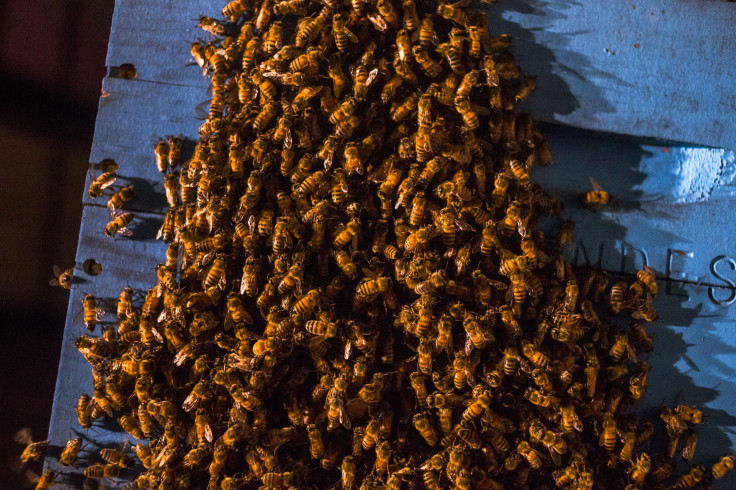How Can We Save Bees? Colony Deaths Linked To Humans, Common-Sense Solutions Exist To Stop Colony Collapse

Scientists are warning a deadly bee disease threatening whole hives and populations of the buzzing insects has spread worldwide and humans are to blame. The virus is not alone in threatening bees: The varroa mite that attaches to honeybees is also decimating bee populations worldwide.
Paired together, the virus and parasite can kill whole hives in what Dr. Lena Bayer-Wilfert, the lead researcher in a study published on the threat to bees, called it a “double blow” for bee colonies, BBC News reported. "This is clearly linked to the human movement of honeybee colonies around the globe,” Bayer-Wilfert of the University of Exeter in England told BBC News about the research.
The study advises stricter controls on bee trading in global markets be put in place, otherwise the effect could be devastating for the insects. “It shows a piece of evidence we can’t argue with,” she said.

The news is clearly disturbing and could ultimately impact more than the lives of bees. Bees are an integral part of the pollination process and are a natural and easy way to complete that process. Without bees, crops could suffer noticeably. So-called colony collapse is not uncommon, however, and has been observed for several decades.
Through DNA mapping, the researchers found the pattern of spread of disease among bee populations can only be explained through manmade and not natural causes. The researchers tracked the emergence of disease in 32 locations within 17 countries where the issues have popped up.
The mites and virus work in tandem, the researchers have theorized, because the mites feed on larvae and also inject the disease into adult bees.
Luckily, there are some relatively common-sense actions that can be taken to counteract this issue. They include implementing tight controls on bee transportation and checking colonies for mites and disease regularly, researchers found.
© Copyright IBTimes 2024. All rights reserved.












